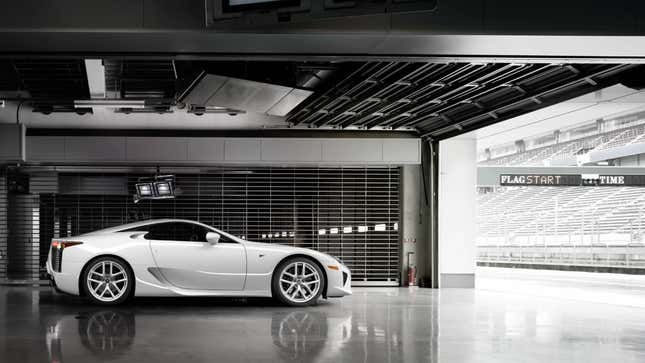How the Lexus LFA Became the Catalyst for Toyota's Performance Revolution

When people think of supercars, Lexus might not immediately leap to mind; however, the introduction of the Lexus LFA in 2010 shocked the automotive world. The LFA wasn’t just a car; it was a statement. It showcased the brand's commitment to pushing engineering boundaries and highlighted the potential of Toyota’s performance division. More importantly, it paved the way for a performance renaissance within Toyota that continues to this day.

Aesthetically, the LFA resembled a grand tourer, yet underneath its elegant lines lay a beast engineered for performance. With its ultra-low center of gravity and breathtaking V10 engine, the LFA was designed to perform on track while exuding luxury. Despite its impressive attributes, sales were sluggish, leaving many to wonder if this car was meant to be a halo vehicle or if it missed the mark entirely.
An Unlikely Success Story
The Lexus LFA was a high-priced supercar with an astronomical price tag of $375,000, and its exclusivity led to an unfortunate sales history. While only 500 units were ever produced and it took over a decade to sell them all, the legacy of the LFA endures. Now, more than a decade after its original release, it’s evident that the LFA transformed the ethos of Toyota during a time when the automotive landscape was shifting rapidly.
Even though Lexus couldn’t find the immediate success in sales they hoped for, the development and engineering concepts birthed from the LFA carried over directly into Toyota's Gazoo Racing division. Akio Toyoda, the company president, significantly became immersed in racing, adopting the pseudonym Morizo Kinoshita to indulge in his passion for motorsports without department interference. This marked a turning point that incentivized the development of performance-oriented vehicles like the GR86, GR Corolla, and GR Supra.
The Technological Legacy
It’s not every day that supercar technology trickles down into more accessible sports cars available for enthusiasts. The LFA wasn't just a technology showcase; it was a philosophical shift. The expertise garnered from its development significantly contributed to the performance features we encounter in contemporary Toyota models. The lightweight components, cutting-edge aerodynamics, and high-revving engine technology that Toyota gleaned from the LFA can now be felt resonating throughout the brand’s performance offerings.
- GR Supra: Incorporating turbocharging, advanced suspension setups, and performance brakes reminiscent of the LFA.
- GR Corolla: A return to the brand’s roots, offering a compact, agile hatchback with rally-bred engineering.
- GR86: Focused on light-weight build and balanced engineering, positioning it as an affordable sports car.
These services have successfully tapped into the performance market, and they owe much of their innovative approach to the groundwork laid by the LFA. The technology and design philosophies flowing from the LFA have allowed Toyota to enhance not only their sports car iterations but also their standard vehicle lineup, bringing enthusiasm and diversity back to the brand.
A Legacy Worth Celebrating
Ultimately, the Lexus LFA teaches us a haiku of hope; that failure can give birth to greatness. While the LFA may have struggled commercially, its impact on the identity and philosophy of the Toyota brand cannot be overstated. Far from being a mere footnote in the annals of automotive history, the LFA has cultivated an environment where performance is not just relegated to high-end models but embraced across the board.
As Lexus continues to evolve and innovate, looking ahead, it's essential to look back and recognize how the LFA influenced the entire landscape of sports cars. The future of performance Toyotas has never looked brighter, thanks to the tenacity and daring spirit embodied in the LFA.